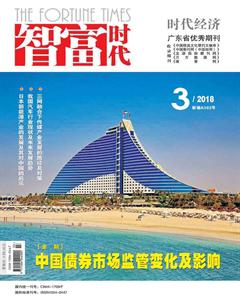The Relations between the Characters’Fates and Theme Presentation
陈琴
【Abstract】Cultural alienation is the culture departing from human and the disappearance of human nature. In The Bluest Eye,Toni Morrison describes the black girl Pechora's tragic life,which demonstrates the black in American society influences by the white culture and causes the alienation among people and self-alienation,which also makes the black feel blurry to position themselves in the reality and lose the self-culture awareness. In addition,the strong position of the white culture and self-superiority also cause the alienation of the white culture and the loss of a wonderful human quality. By words,the writer accuses the social reality of the United States and calls the human nature of the black and white return.
【Key words】 cultural invasion;cultural alienation; self-alienation.
I. Introdution
“The Bluest Eye” is created based on the background of African American spiritual slavery before and after 1941. They suffered from the spiritual enslavement in which American white people try to devoid of black traditions. Although the “physical bondage” has gone, the impoverishment of the Southern blacks, the implied racial discrimination, both of them still existed in the United States. Under the spiritual enslavement, a part of blacks enjoy their improved material life, total and uncritical accepting the whites values. As a result, the black unknowingly discard the nations fine cultural traditions.
The novel presents us many themes, while this paper will discuss the relations between the characters fates and theme presentation on the theme that, under the strong culture of the white, black values become distorted. Through the analysis the thesis reaches a conclusion that internalization or rejection of white culture can only lead to the loss of blackness even self-destruction of black culture. Only by sticking to the essence of black culture,and in the meantime, tolerantly accepting the excellent white culture can the African-Americans gain the opportunity for survivals and black culture obtain the space for development.
II.Internalization of White Culture
In modern American society, the dominant white culture exerts its pervasive overwhelming power in peoples everyday life which influences people potentially and deeply. Racial discrimination has become more and more invisible. Living in the white dominated society, the Afro-Americans face the dilemma of safeguarding the black culture, establishing their own culture identity and integrating themselves into the society. Morrison shows close concern to her black fellows and manages to explore ways for the survival and development of black culture. In The Bluest Eye, there are two typically different attitudes the blacks take towards the white dominant culture: internalization exemplified by Pauline, Pecola; and tolerance illustrated by Mrs. Macteer. In The Bluest Eye, the Afro-Americans represented by Pecola, Pauline who are influenced by the propaganda of white beauty and supremacy, internalize the white norms of beauty and generate alienation and hatred of being themselves, which leads to the complexity of their psyche: a mixture of their rejection of the blackness and worship of the whiteness.
III. Tolerance of White Culture
Claudia lives in such environment wrapped by black traditions and cultures, they can stubbornly live with the black life philosophy and cultural practices in the United States which advocates the white mainstream culture and white values. The change of black ethnic identity is not to sacrifice self and sacrifice the black tradition to obtain, but from the depths of the black humans blood to decide. This blood determines the root of the black, the black family view and values.
Claudia's mother, Mrs. MacTeer, different from Pecola's mother, Pauline, always manages to provide a happy wholesome life for her children. On one hand, influenced by white culture, she accepts part of it. There is a shadow of the white culture in her which can be detected from the Christmas gift she has bought for Claudia. On Christmas day, MacTeer gives Claudia "the big. the special, the loving gift"—a “big blue-eyed Baby Doll”,72 which proves her partial approval of white culture. When Claudia, dissatisfied with the gift, dismembers the doll, Mrs. MacTeer scolds her “you dont know how ttake care of nothing, I never had a baby doll in my whole life and used to cry my eyes out for them.”73 She has yearned for white doll which represents white aesthetic values since she was a little child, which demonstrates her tolerance of white culture. On the other hand, she sticks to the essence of the black culture. She likes singing, which is an obvious sign of the black. “Sometimes, she would sing about hard times, bad times, and somebody-done gone and left-me times. But her voice was so sweet and her singing-eyes so melty I found myself longing for those hard times, yearning to be grown without ‘a thin di-i-ime to my name.”20 This is a way to remind her family not forgetting the old time, their blacks culture.
Conclusion
In a word, Morrison not only challenges the tradition, reveals the influences of the white cultural hegemony to the blacks, but also express her purpose on inspiring her compatriots to stand up to sustain their own culture. She wants to wake up her black neighbor to maintain their self-esteem and their own tradition even under the white cultural hegemony. Only fighting with hegemony and maintaining their own cultural origin can they survive.
【References】
[1] Toni Morrison. The Bluest Eye, 1970.
[2] Ogunyemei, Chikwenye, Order and Disorder in Toni Morrisons The Bluest Eye, in Critique, 1997.p. 166.
[3] Morrison, T. Memory, Creation, and Writing [J]. Thought, 1984(4).
[4]Rigney, B.H. The Voice of Toni Morrison, Columbus: Ohio Static University Press, 1991.
[5]許芳.托妮.莫里森笔下的黑人世界[J].武汉理工大学学报,2001(6):586-590.
[6]张宏薇.《最蓝的眼睛》文化透视[J].外语学刊,2008(5):139-42.
[7]章汝雯.佩克拉布里德拉夫的悲剧根源[J].四川外语学院学报,2002(5):49-52.

